How to do the great American road trip: Nevada and Southern California
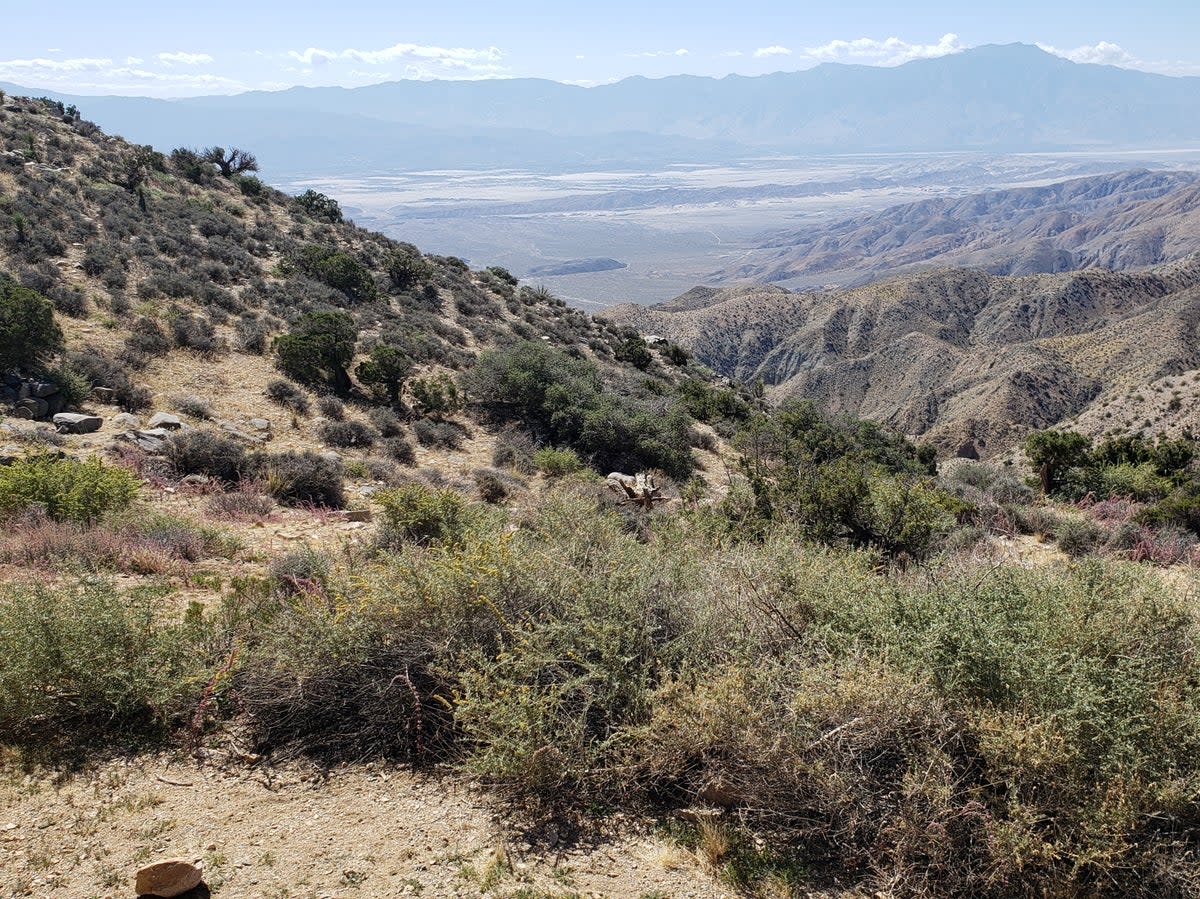
“You know the best thing about Nevada? No mosquitoes!” The elderly assistant at the Mesquite Welcome Center was full of useful titbits as we exchanged experiences at this roadside rest stop.
His mosquito comment was offered after he learned we had driven all the way from Florida in our RV, a distance of 6,200 miles to date. Originally from the Sunshine State himself, he and his wife had settled in north-east Nevada and were thrilled at the lack of biting insects.
The absence of mosquitoes was definitely noticeable, but it wasn’t why we had taken I-15 south from Utah. This was our route to Nevada’s famous Sin City, but also a wealth of national parks and preserves.
It had started with a stunning landscape transformation through the challenging Virgin River Gorge across north-west Arizona. This 30-mile stretch of twisting, tortured highway featured a 1,500ft elevation drop and a series of switchbacks and bridges through limestone cliffs that loomed 1,000ft above our RV, Indefatigable (or Fati for short).
It was the most expensive highway ever built when completed in 1973, at a cost of $1.63 million per mile, after a 17-year construction process. Today it still provides a riveting 45-minute montage of geological wonders through the main gorge, emerging at the final bend into the dramatic Mojave Desert, complete with cactus, Joshua trees and tumbleweed.
Our minds were suitably boggled even before we reached Mesquite and its mosquito-less environment. We took a picnic lunch up to the Foothills Trailhead, affording a commanding view of the Virgin River Valley and convergence of three immense ecosystems – Utah’s Great Basin, the Colorado Plateau and the Mojave.
The classic desert panorama spread out to the southern horizon, a deceptively benign vista that was to be our constant companion for the next month. Utah had provided plenty of rugged, arid wilderness, but Nevada’s desert profile was on a different scale, an entire state composed of seemingly barren wasteland.
It’s easy to see why the Valley of Fire has been chosen by film crews looking for offworld backdrops
As we continued south on I-15, the impression of bleak emptiness was quickly dispelled, thanks to our commanding view from Fati’s cab as, once again, our RV perspective proved invaluable.
Given the extra elevation, we could see definite signs of life amid the desolation. Different types of cactus afforded shelter and food to quail, lizards and jackrabbits, while the occasional coyote lurked with intent. There were also warnings to beware of rattlesnakes, scorpions and tarantulas, reminders of this other, more perilous, wildlife.
Anxious to avoid taking Fati into the city, we pulled into the Hitchin’ Post RV Park & Motel in North Las Vegas. It dated back to 1948 but there was nothing outmoded about its style or convenience, overlooking the famous Strip yet nicely insulated from the tourist frenzy. More importantly, it opened the door to the surrounding desert areas, where local accounts insisted the real treasure of Vegas could be found.
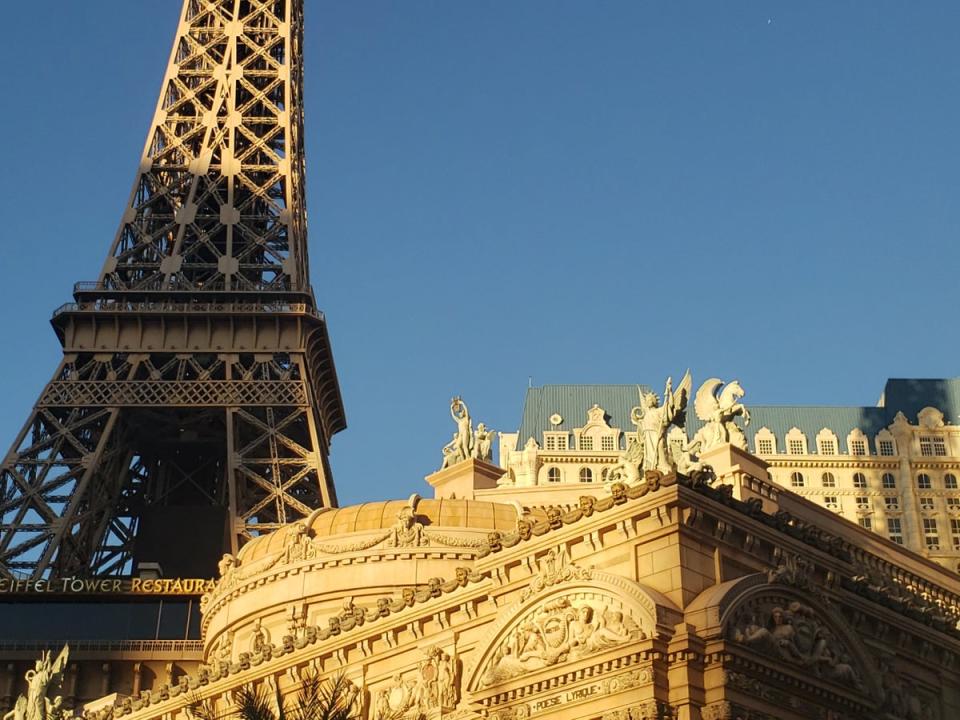
Sure enough, Valley of Fire State Park offered rich pickings, with 2,000-year-old petroglyphs left by the mysterious Anasazi people carved into the vivid red Aztec sandstone formations. The drive through the main valley – an official Nevada Scenic Byway – was utterly breathtaking; hiking the Elephant Rock Loop an exercise in close-quarters wonder.
It was easy to see why the valley had been chosen by a variety of film crews looking for offworld backdrops, notably for the planet Veridian III in 1994’s Star Trek: Generations and as Mars in Arnold Schwarzenegger’s Total Recall.
The valley led on to Lake Mead National Recreation Area, a 1.5-million acre playground of hiking, biking and boating opportunities, all set amid a startling topography formed by billion-year-old volcanic upheavals that have been heavily eroded, leaving behind more alien planetscapes.
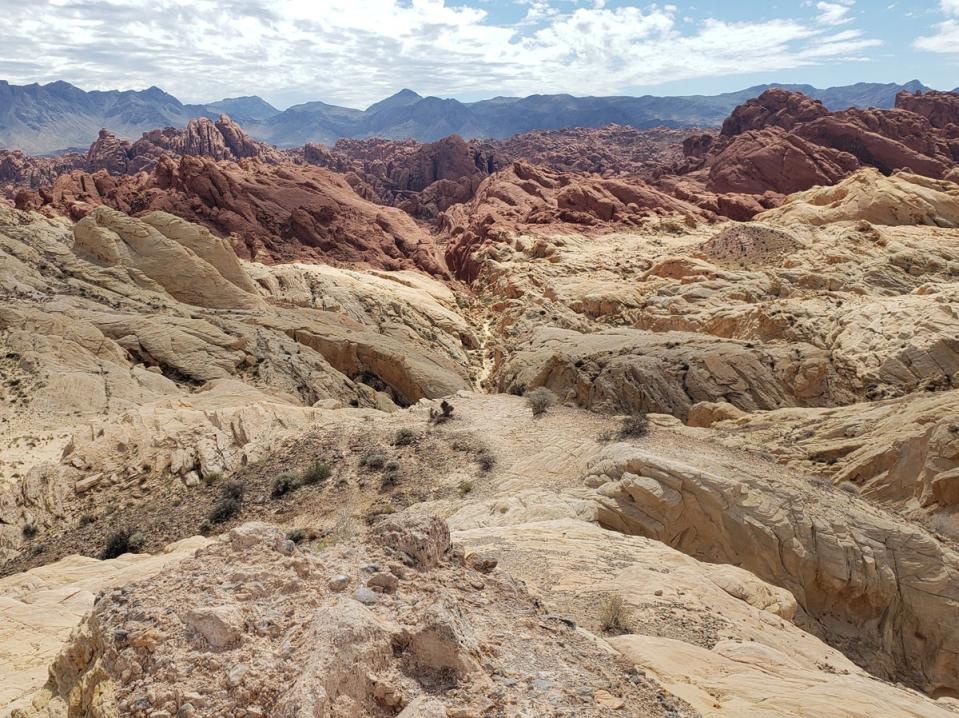
This image of Nevada as Hollywood’s sci-fi backyard was underlined further by Red Rock Canyon, where another compelling desertscape grabbed our attention with its jaw-dropping beauty. The 13-mile one-way drive provided multiple close-ups of more geological masterworks – scarlet sandstone and smooth grey Paleozoic limestone in contrasting bands, moulded into outlandish shapes and ravines.
For the next stage of our journey, we faced a conundrum. We wanted to see the sights of southern California, but the mileage looked prohibitive for Fati, especially with petrol at $6 a gallon in that state and an 80-gallon tank to fill. But we could manage much more in Nippy, our Ford Fiesta, so we set our sights on an RV camp in south-east Nevada from which we could reach Palm Springs, and all points in between, by car.
Don Laughlin’s Riverside Resort & RV Park was perfectly situated a 100-mile drive south of Vegas on US 95. This allowed a quick detour to the engineering marvel of the Mike O’Callaghan-Pat Tillman Memorial Bridge for a superb overview of the colossal Hoover Dam.
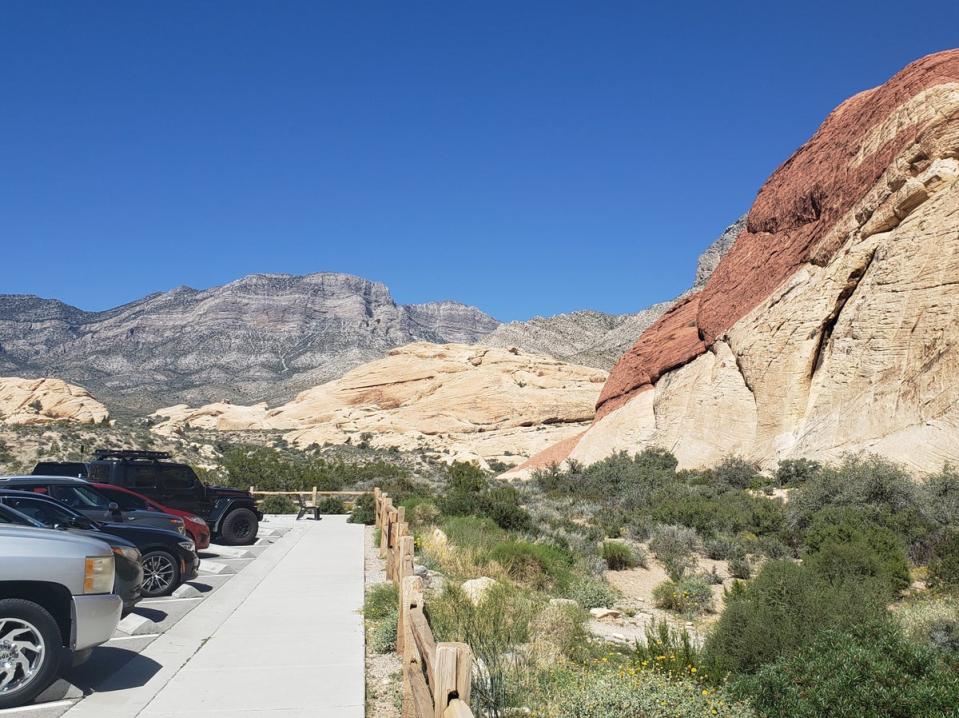
The town of Laughlin proved a curious offshoot of Vegas, a community built on casinos and split from neighbouring Bullhead City by the Colorado River, which provided a non-stop array of water activities, from jet-skis to fishing. Behind Bullhead, the desolate, shattered shapes of the Black Mountains loomed like the menace of Mordor. It made for a stunning setting and magnificent sunsets.
From Laughlin, we planned some California dreaming. We would head south-west through the Mohave National Preserve, continue to Joshua Tree National Park, then spend a few days in the desert enclave of Palm Springs, returning via the historic Route 66 town of Needles, a round-trip of 450 miles.
We hit the jackpot. The Mohave Preserve gave us a landscape as diverse as the Golden State itself, from surprising woodlands to rugged cliffs and steep canyons, sprinkled with immense cactus fields, the surreal “booming” sands of the Kelso Dunes and the occasional – and endangered – desert tortoise.
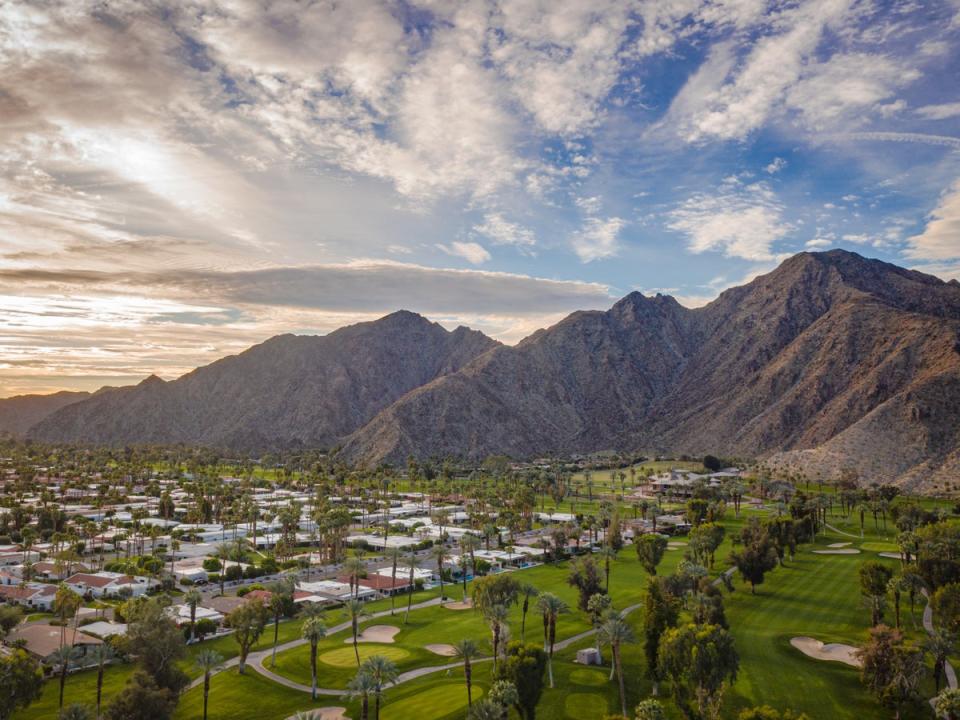
Joshua Tree wowed us with extensive stands of its namesake plant, which, as it turned out, is not a tree but a variety of yucca that grows up to 50ft tall and sprouts offshoots, or branches, that are unique to each ‘tree.’ Joshua Tree also boasts a dazzling array of cactus, notably the prickly pear and barrel cactus, plus the cuddly-looking – but outrageously sharp – teddybear cholla, each of which thrive at different elevations.
Palm Springs opened the door to man-made delights. It was Susan’s first visit since her early twenties, and the intervening 35 years had seen an expansion of epic proportions, especially in the growth of the valley’s iconic wind turbine farm, the oldest in the US.
Surrounded by mountains but with the San Gorgonio Pass acting like a wind tunnel, Palm Springs has been the poster child for wind energy since the early 1980s. Today it continues to be at the forefront of renewable energy technology, with fewer but more powerful turbines.
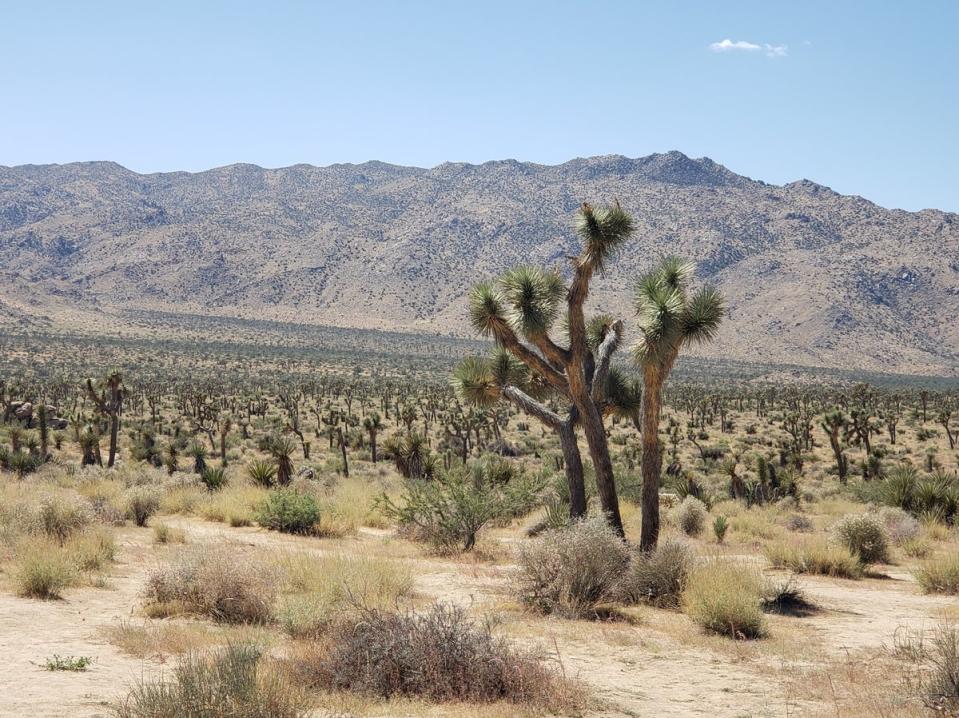
For three days, we marvelled not just at the high-tech features but at the superb displays of the Palm Springs Air Museum, the Hopi-inspired Cabot Pueblo Museum and poignant Desert Holocaust Memorial in Civic Center Park, as well as a host of picture-perfect golf courses.
For somewhere to stay, the boutique charms of The Inn at Palm Springs were ideal, a dog-friendly hideaway close to the main attractions but just outside the main drag. The inn has sharp, bright rooms, neat grounds and a cute, secluded pool deck that we totally failed to relax on.
In truth, we were far too busy enjoying this urbane destination. Having spent most of our first five months on the road in small-town environments, we took full advantage of this more sophisticated setting, including elegant patio cocktails and dinner at Trio, a hearty breakfast at Grand Central (where the waffles were divine) and the upbeat California vibe of Lulu’s Bistro.
We also couldn’t ignore the signature local beverage. Shields Date Garden, with its 17-acre date grove and botanical garden, has been serving its delicious secret-recipe date shakes since 1924. Their luscious creaminess proved a tastebud-tantalising highlight.
But, after all the food and frolics, it was time to return to Fati and head east for the first time in almost six months.
Next stop: Arizona...
How to do it
RVing 101
In addition to a proper RV GPS (like our Garmin 890), a copy of the Mountain Directory West is essential to route planning, highlighting mountain roads and passes that are best avoided.
A tyre pressure monitor system is another vital adjunct to long-distance RV driving. We have the Eez RV 518C, which alerts us to any critical issues with our tyres.
RV Factfile
For the best places to stay in Palm Springs, www.visitgreaterpalmsprings.com.
Check out Nevada’s amazing outdoor recreation options at https://travelnevada.com/.
For nationwide RV campground choice, see https://koa.com/.
Read more on the best USA hotel reviews

 Yahoo News
Yahoo News 
